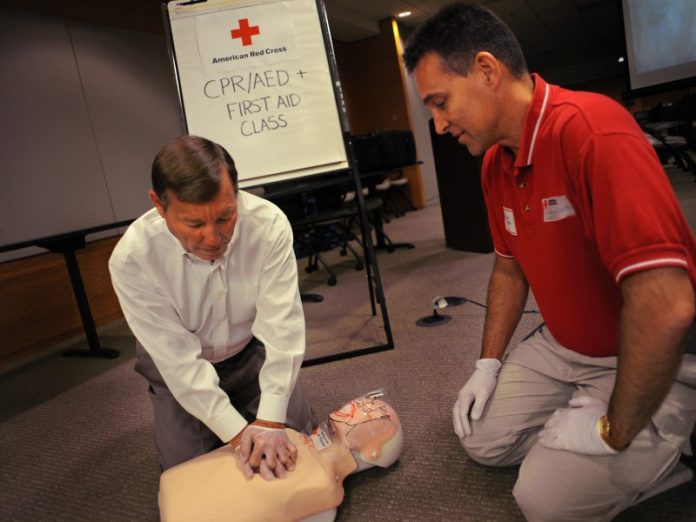Cardiopulmonary Resuscitation (CPR) and First Aid certification are crucial skills that empower individuals to respond effectively during life-threatening emergencies. These certifications are essential for healthcare professionals, teachers, parents, caregivers, and anyone interested in ensuring the safety and well-being of others. In this article, we’ll explore what is CPR First Aid certification entails, its importance, and how it compares to Basic Life Support (BLS) certification.
What Is CPR First Aid Certification?
CPR and first aid certification is a formal recognition of an individual’s ability to provide immediate care in emergency situations. It includes training in CPR techniques such as chest compressions and rescue breaths, as well as basic first aid skills. CPR and first aid certification equips individuals with the knowledge and skills needed to respond to a wide range of emergencies, including cardiac arrest, choking, injuries, and more.
Key Components of CPR First Aid Certification:
- CPR Techniques: CPR certification covers essential skills like chest compressions and rescue breaths, which are crucial for maintaining blood circulation and delivering oxygen to vital organs when a person’s heart and breathing have stopped.
- First Aid Skills: First Aid certification includes training in wound care, bandaging, fracture management, burns, and other basic medical interventions to stabilize a victim’s condition until professional medical help arrives.
- Choking Response: CPR First Aid Certification teaches individuals how to respond to choking emergencies, including techniques for dislodging obstructions in the airway.
- AED Usage: Automated External Defibrillator (AED) operation is often part of CPR First Aid certification, enabling individuals to use these life-saving devices to restore a normal heart rhythm in cases of sudden cardiac arrest.
Why Is CPR First Aid Certification Important?
- Immediate Response: In emergencies, immediate action can be the difference between life and death. CPR/First Aid certification empowers individuals to respond quickly and effectively, potentially saving lives until professional help arrives.
- Confidence:*:ertification instills confidence in responders, enabling them to act calmly and competently during high-stress situations.
- Safety in Various Settings: CPR First Aid certification is valuable in various settings, including homes, schools, workplaces, and community organizations, where accidents and medical emergencies can occur.
BLS vs. CPR Certification: While both BLS and CPR certifications cover life-saving techniques, they target different audiences and levels of expertise.
CPR Certification:
Audience: CPR certification is suitable for laypersons and individuals who do not work in healthcare settings. It is designed for the general public, including parents, teachers, and caregivers.
Skills Covered: CPR certification primarily focuses on basic life support techniques, including chest compressions, rescue breaths, AED use, and choking response.
Certification Validity: CPR certification typically lasts for two years before requiring renewal.
BLS Certification:
Audience: BLS certification is tailored for healthcare professionals such as doctors, nurses, paramedics, and clinical staff. It is essential for those who need advanced life support skills in medical settings.
Skills Covered: : Certification encompasses a broader range of skills, including CPR techniques, advanced airway management, and additional medical interventions specific to healthcare settings.
Certification Validity: BLS certification is also valid for two years, after which it must be renewed.
Conclusion:
CPR and first aid certification is a valuable credential for individuals who want to be prepared to respond effectively during emergencies in various non-healthcare settings. It equips individuals with the knowledge and skills needed to provide immediate care, administer CPR, and offer basic first aid interventions.
In contrast, BLS certification is essential for healthcare professionals who require more advanced life support skills and interventions tailored to medical environments. Both certifications play critical roles in promoting public safety and improving the chances of survival during life-threatening emergencies. Choosing the right certification depends on your professional role and the level of training required for your specific setting.
















